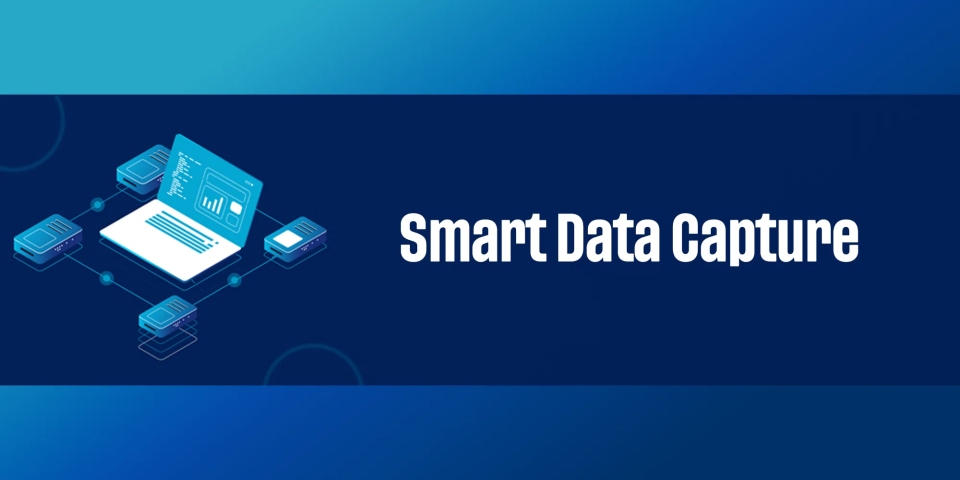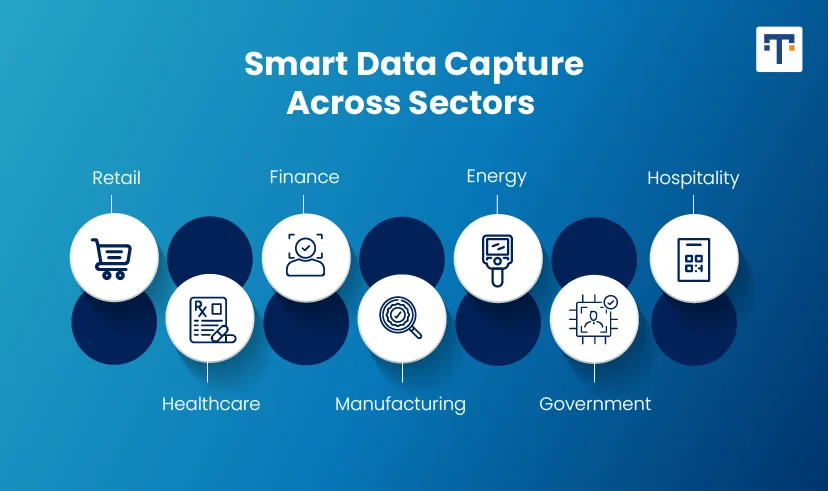Necessary Always Active
Necessary cookies are required to enable the basic features of this site, such as providing secure log-in or adjusting your consent preferences. These cookies do not store any personally identifiable data.
|
||||||
|
||||||
|
||||||
|

Imagine if businesses could capture information instantly, without typing, paperwork, or delays. From scanning a customer’s ID in seconds to checking product stock in real time, the way enterprises handle data is changing rapidly. This shift is powered by Smart Data Capture (SDC). Using AI-powered data-capturing technology, SDC can automatically read barcodes, IDs, documents, or even objects through cameras and mobile devices.
Speed and accuracy are no longer optional; they define competitiveness. The timing is right when the qualified labor shortage demands more automation. Businesses deal with growing amounts of data daily. Customers also expect smooth, real-time digital experiences across every touchpoint.
Gartner predicts that by 2027, more than 70% of enterprises will adopt SDC. According to a 2025 IDC report, 45% of Fortune 500 companies have initiated SDC pilots, with Coca-Cola reporting a 25% reduction in paperwork time after SDC rollout.
In this article we will explore smart data capture trends of 2025, how businesses are using SDC today, which industries are leading the way, and how it’s shaping the future of smarter, data-driven enterprises.
Smart Data Capture is changing how businesses collect and use information. It represents a deeper evolution, that turns raw inputs into actionable intelligence that fuels faster decisions and smarter operations. By bridging physical and digital interactions, it has moved from being a support function to becoming central to enterprise transformation.

This evolution shows how organizations are adapting to rising demands for accuracy, speed, and seamless experiences. The journey from traditional scanning to AI-powered intelligence highlights the shift towards data-driven ecosystems, where every captured detail adds value to business outcomes.
Regulated sectors like finance, healthcare, and government use it for compliance and security. Customer-focused sectors like retail, telecom, and hospitality rely on it to improve experiences. Operational industries such as manufacturing, energy, and logistics use it to increase efficiency.
By leveraging artificial intelligence (AI) and computer vision, SDC converts images into structured, actionable data in real time. The result is faster processing, fewer errors, and seamless integration into enterprise workflows. Organizations across industries are rapidly adopting SDC to enhance efficiency, accuracy, and customer experience.
1. Retail and Logistics: Retailers are using SDC for automated checkout and shelf recognition. Cloud–edge integration is a crucial enabler for SDC in logistics and retail. Amazon Go stores are a prime example, where cameras track customer actions directly. Customers can pick items, walk out, and get billed automatically, with no manual checkout required.
2. Healthcare: Hospitals like Philips Solutions are using SDC for scanning prescriptions, patient IDs, health records and primarily centers around AI-enabled medical imaging, digital pathology, patient monitoring, and health informatics.
3. Finance & Insurance: Banks and insurers use SDC for KYC and ID checks. For example, HSBC uses AI-powered ID scanning for digital onboarding. Loan processing is faster, and compliance checks are automated.
4. Manufacturing: Factories like Honeywell and Zebra use it for real-time quality checks and defect detection. Zebra Technologies reports 30% faster quality checks since deploying SDC in US auto plants in 2025.
5. Energy & Utilities: Utility companies like Schneider Electric use SDC for meter reading and inspections. AR-enabled tools help workers detect issues faster and reduce safety risks.
6. Government & Public Services: Governments use SDC for ID verification and border checks. Singapore’s Changi Airport uses automated passport/biometric clearance. This speeds up travel and reduces queues.
7. Hospitality & Consumer Services: Hotels like Marriot and Hilton use mobile check-in and digital keys, while restaurants link QR menus with loyalty programs.
SDC is also expanding into new areas such as agriculture, education, telecom, and logistics. From monitoring crops to digitizing exams or streamlining registrations and shipments, its applications continue to grow across industries.
Enterprises are increasingly using Smart Data Capture to connect physical and digital experiences. This not only improves convenience but also deepens customer engagement across multiple channels.
A key advantage lies in how captured data integrates seamlessly into enterprise systems. Whether through POS, CRM, or marketing automation platforms, the information flows directly where it can be analyzed and acted upon. This allows brands to design highly targeted campaigns, optimize loyalty rewards, and personalize engagement in real time.
Modern consumers demand experiences that are instant, personalized, and effortless. Enterprises are addressing this demand by adopting tools that seamlessly connect every touchpoint in the customer journey. From e-commerce to in-store kiosks, mobile checkouts to customer service, Smart Data Capture ensures continuity across the journey.
Smart Data Capture is playing a critical role in supporting hybrid and digital-first enterprise operations. But beyond efficiency, enterprises must also ensure compliance, protect sensitive data, and adopt responsible AI practices. Together, these elements define the future of intelligent, data-driven operations.
Smart Data Capture enables enterprises to streamline complex workflows. AR-assisted vision tools reduce errors and downtime, while real-time data sharing and automation cut manual work and boost ROI.
Alongside efficiency, enterprises must ensure compliance and security. Modern SDC platforms use encryption and regulatory controls to protect sensitive data.
As SDC adoption grows, enterprises must also use AI responsibly. This includes reducing bias in algorithms, ensuring transparency, and securing user consent.
The businesses that lead markets are often the ones that adopt transformative technologies early. Delayed adoption, on the other hand, may lead to rising operational costs and lost opportunities. Businesses that hesitate to take risks fall behind in today’s fast-changing digital market.
Technologies like 5G, on-device AI (edge chips), and privacy-preserving AI models are powering the next wave of SDC, offering faster processing, enhanced privacy, and new capabilities for decentralized operations.
The benefits are not confined to the present but play a critical role in shaping future success. Companies that invest in SDC today secure higher returns on investment tomorrow. Beyond efficiency, SDC helps sustain competitiveness in crowded markets.
To move forward, enterprises need a clear roadmap. This means aligning Smart Data Capture with overall business objectives, ensuring systems are cross-platform ready, and integrating AI capabilities for smarter automation. Security and scalability must be embedded at every stage to build a reliable foundation.
With the right strategy, SDC drives sustainable and data-driven growth. Now is the time for organizations to evaluate their readiness and work with trusted technology partners to shape an SDC strategy fit for 2025 and beyond. By starting today, businesses can ensure they’re not just keeping pace with change but shaping the future of intelligent operations.
Sign up to receive our newsletter featuring the latest tech trends, in-depth articles, and exclusive insights. Stay ahead of the curve!